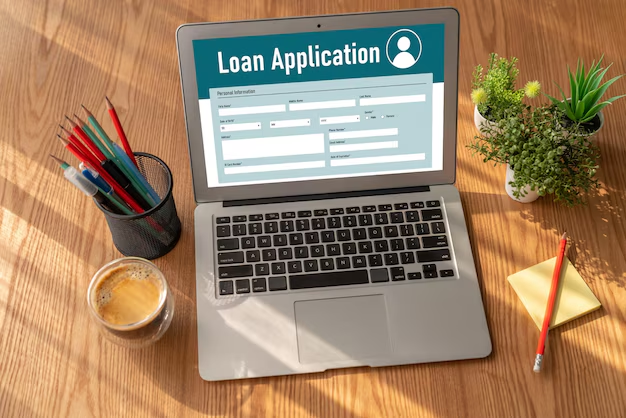Navigating the Process: How to Apply for an SBA Loan
Getting a Small Business Administration (SBA) loan can be a game-changer for your business, providing the necessary funding to grow, improve operations, or get started. However, the process of applying can seem daunting. Let's break down everything you need to know about applying for an SBA loan, from eligibility requirements to application tips, in a simple, engaging guide.
Understanding SBA Loans
Before diving into the application process, it's crucial to understand what SBA loans are and how they can benefit your business. SBA loans are not directly issued by the Small Business Administration. Instead, the SBA provides a guarantee to banks and lenders for qualifying loans, which reduces the risk for the lenders and makes it easier for small businesses to access capital.
Types of SBA Loans
There are several types of SBA loans, each designed to meet different business needs:
- 7(a) Loans: The most common loan program, ideal for purchasing real estate, equipment, or working capital.
- CDC/504 Loans: Used for purchasing large fixed assets like equipment or real estate.
- Microloans: Small loans up to $50,000, often used for inventory, supplies, or working capital.
- Disaster Loans: For businesses impacted by natural disasters, providing financial assistance during recovery efforts.
Preparing to Apply for an SBA Loan
Determine Your Eligibility
The first step is determining if your business is eligible for an SBA loan. Key eligibility criteria generally include:
- Your business must be located and operating in the U.S.
- It must be a for-profit business.
- You should have reasonable invested equity.
- Must demonstrate a need for a loan.
- There should be no available funds from other sources.
Consulting the SBA website or a lender for specific details is advisable.
Assemble Your Documentation
Successful application depends on submitting accurate documentation. Essential documents often include:
- Personal and business tax returns
- Profit and loss statements
- Business financial statements
- Loan application history
- Business license
- Resumes of key management
- A detailed business plan
Organizing these documents beforehand can prevent setbacks during the application process.
Assess Your Creditworthiness
Both your personal and business credit scores play a significant role. While many lenders prefer better credit scores, having a lower score does not automatically disqualify you. Understanding what lenders are looking for in credit evaluations can help you be better prepared.
Starting Your SBA Loan Application
Choose the Right Lender
The next crucial step is selecting an appropriate lender. Lending institutions include:
- National Banks: Known for structured processes and competitive rates.
- Local Banks or Credit Unions: Offer understanding of regional businesses, often providing personalized service.
- Online Lenders: Convenient and quick, although they may come with varied rates and terms.
Fill Out the Application
While filling out your application, accuracy and attention to detail are paramount. Ensure the information aligns with your documented financials. Mistakes or discrepancies could lead to delays or rejection.
Applying Through SBA Lenders
You can apply for most loan types by working directly with an SBA-approved lender. SBA lenders have a streamlined application process, and many offer online applications for increased convenience.
Practical Tips for a Successful SBA Loan Application
- Craft a Stellar Business Plan: Your business plan should clearly articulate your business model, financials, and growth forecast. A well-crafted plan boosts lender confidence.
- Highlight How the Loan Will Be Used: Demonstrating a clear, strategic use of the loan can show that you are not borrowing unnecessarily.
- Be Ready to Answer Questions: Lenders may have additional questions. Prepare to explain your business model and financials thoroughly.
Overcoming Common Challenges
Address Loan Rejections Constructively
In the event your loan application is rejected, ask the lender for feedback and understand the reasons behind the decision. Often, applicants are encouraged to adjust and reapply after corrective measures.
Supporting with Collateral
While SBA loans often require less collateral than traditional loans, being prepared with assets can improve your application’s chance of approval.
Wrapping Up
Applying for an SBA loan can be a pathway to long-term success for your business. By understanding the requirements, organizing your documentation, and taking time to present a compelling application, you increase your chances of securing the funding you need.
Quick Summary of SBA Loan Application Process 🏦
- Identify Your Needs: Know the type and amount of loan you need.
- Evaluate Eligibility: Ensure your business meets the SBA’s requirements.
- Gather Documents: Prepare financial records, business plan, and other necessary documents.
- Choose a Lender: Research and decide between banks, credit unions, or online lenders.
- Complete Application: Double-check details for accuracy and completeness.
- Address Challenges: Use feedback constructively and adjust your application if needed.
With the right preparation, patience, and persistence, an SBA loan can become a pivotal resource in your business journey.

Related Topics
- Are Sba Loans Personally Guaranteed
- Can I Get a Small Business Loan With Bad Credit
- Can Sba Loans Be Forgiven
- Does The Sba Forgive Loans
- How Can I Get a Small Business Loan
- How Can I Refi My Sba Loan
- How Can You Get a Small Business Loan
- How Do I Apply For a Small Business Loan
- How Do I Get a Sba Loan
- How Do I Get a Small Business Loan